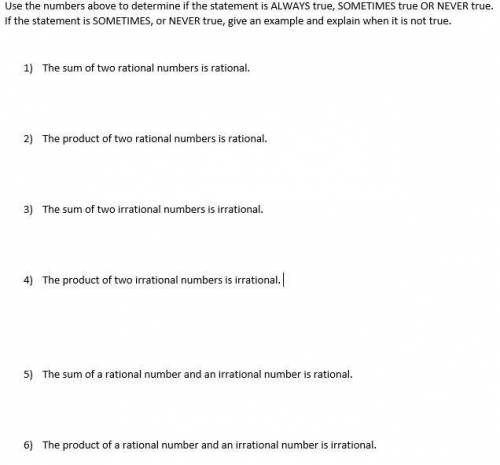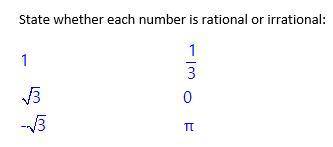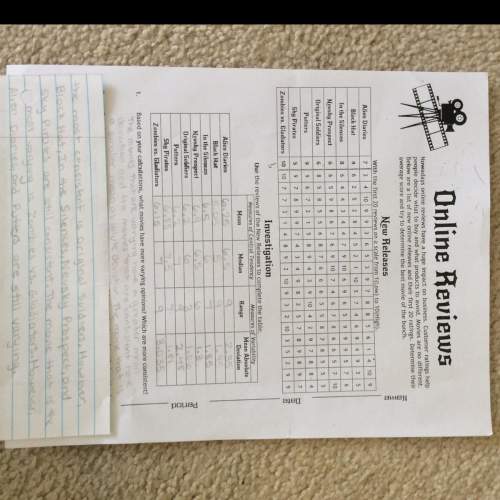
Mathematics, 05.04.2020 20:20 kyrabrown33
Use the numbers above to determine if the statement is always true, sometimes true or never true. if the statement is sometimes, or never, give an example and explain when it is not true.



Answers: 2


Other questions on the subject: Mathematics

Mathematics, 21.06.2019 22:00, Jasten
(05.02)a farmer has decided to divide his land area in half in order to plant soy and corn. calculate the area of the entire area so he knows how much soil is needed. a parallelogram with a height of 6 yards and side length 9 yards. the height forms a triangle with the slanted side of the rhombus with a base of 2.5 yards. rhombus is split into a soy half and a corn half. each bag of soil covers 40 square yards. how many bags should the farmer purchase?
Answers: 3


Mathematics, 22.06.2019 03:30, kristaaune2374
Ben and cam are scuba diving. ben is 15.815.8 meters below the surface of the water. cam is 4.24.2 meters above ben. what is cam's position relative to the surface of the water? choose 1 choose 1 (choice a) a 11.611.6 meters above the surface of the water (choice b) b 11.611.6 meters below the surface of the water (choice c) c 2020 meters above the surface of the water (choice d) d 20 meters below the surface of the water
Answers: 1

Mathematics, 22.06.2019 04:30, alexisss23
Television viewing reached a new high when the global information and measurement company reported a mean daily viewing time of 8.35 hours per household. use a normal probability distribution with a standard deviation of 2.5 hours to answer the following questions about daily television viewing per household. a. what is the probability that a household views television between 4 and 10 hours a day? (to 4 decimals) b. how many hours of television viewing must a household have in order to be in the top 7% of all television viewing household? (to 2 decimals) c. what is the probability that a household views television more than 4 hours a day? (to 4 decimals)
Answers: 1
You know the right answer?
Use the numbers above to determine if the statement is always true, sometimes true or never true. if...
Questions in other subjects:


Mathematics, 07.02.2022 05:10


Physics, 07.02.2022 05:10


Mathematics, 07.02.2022 05:10








